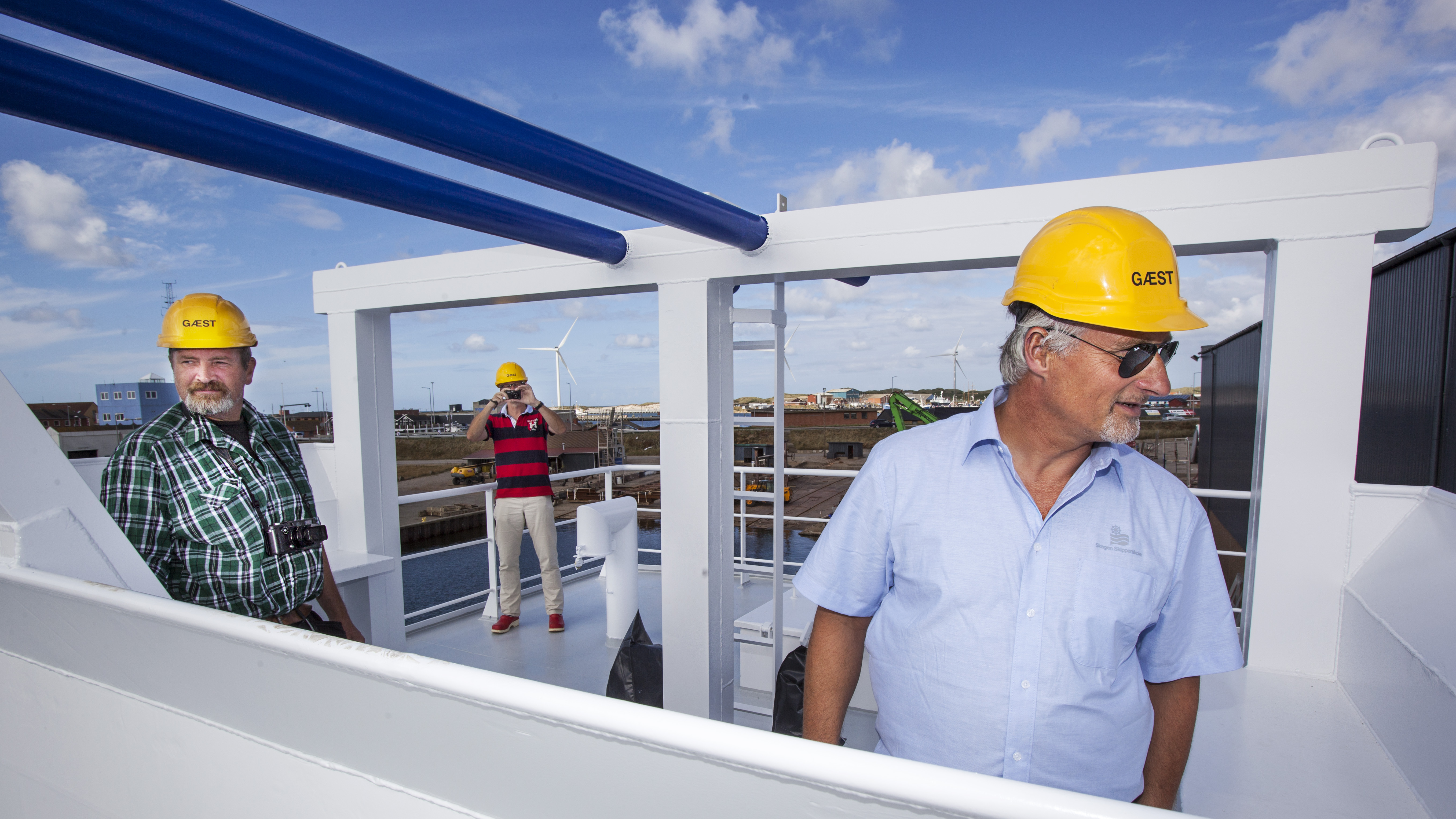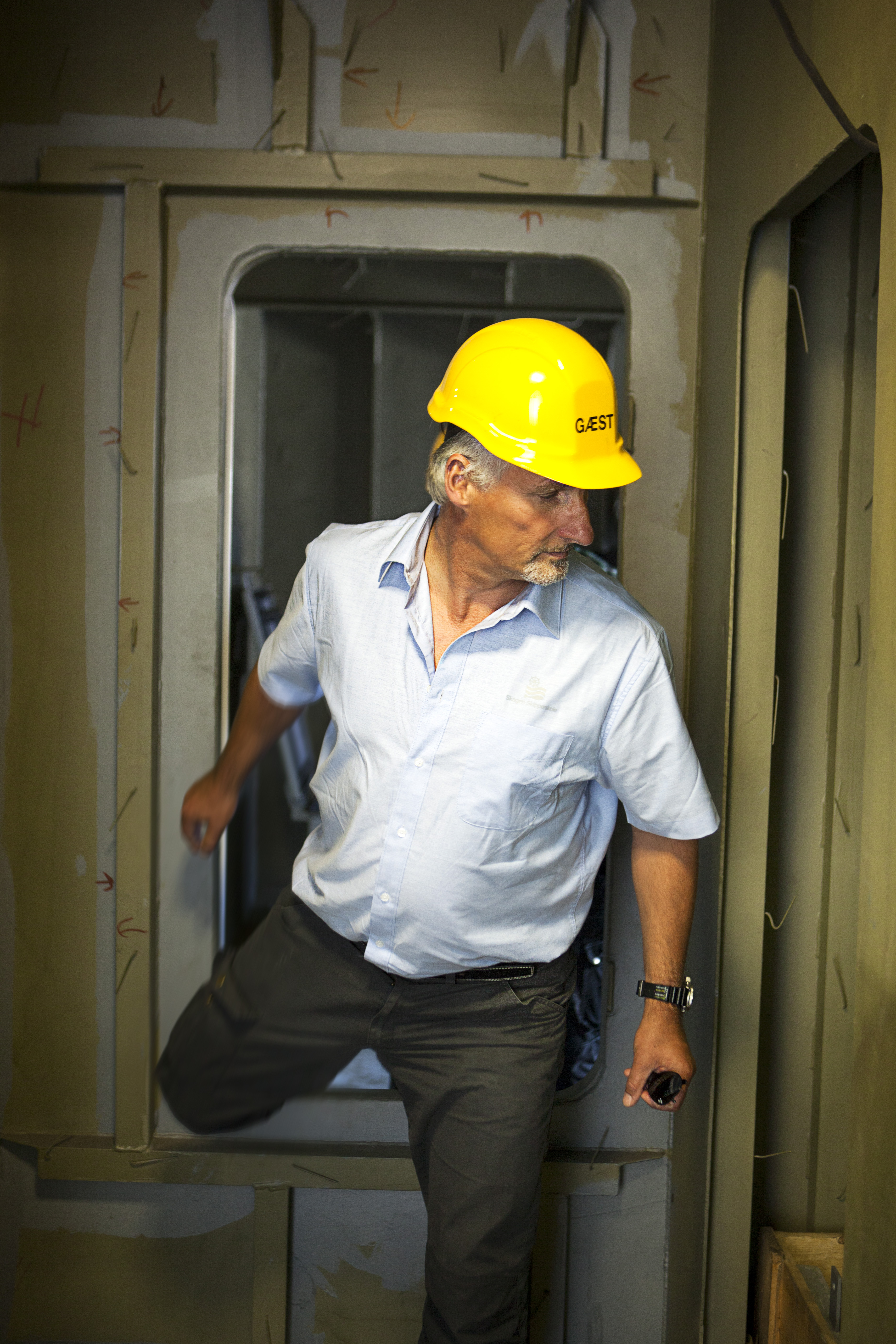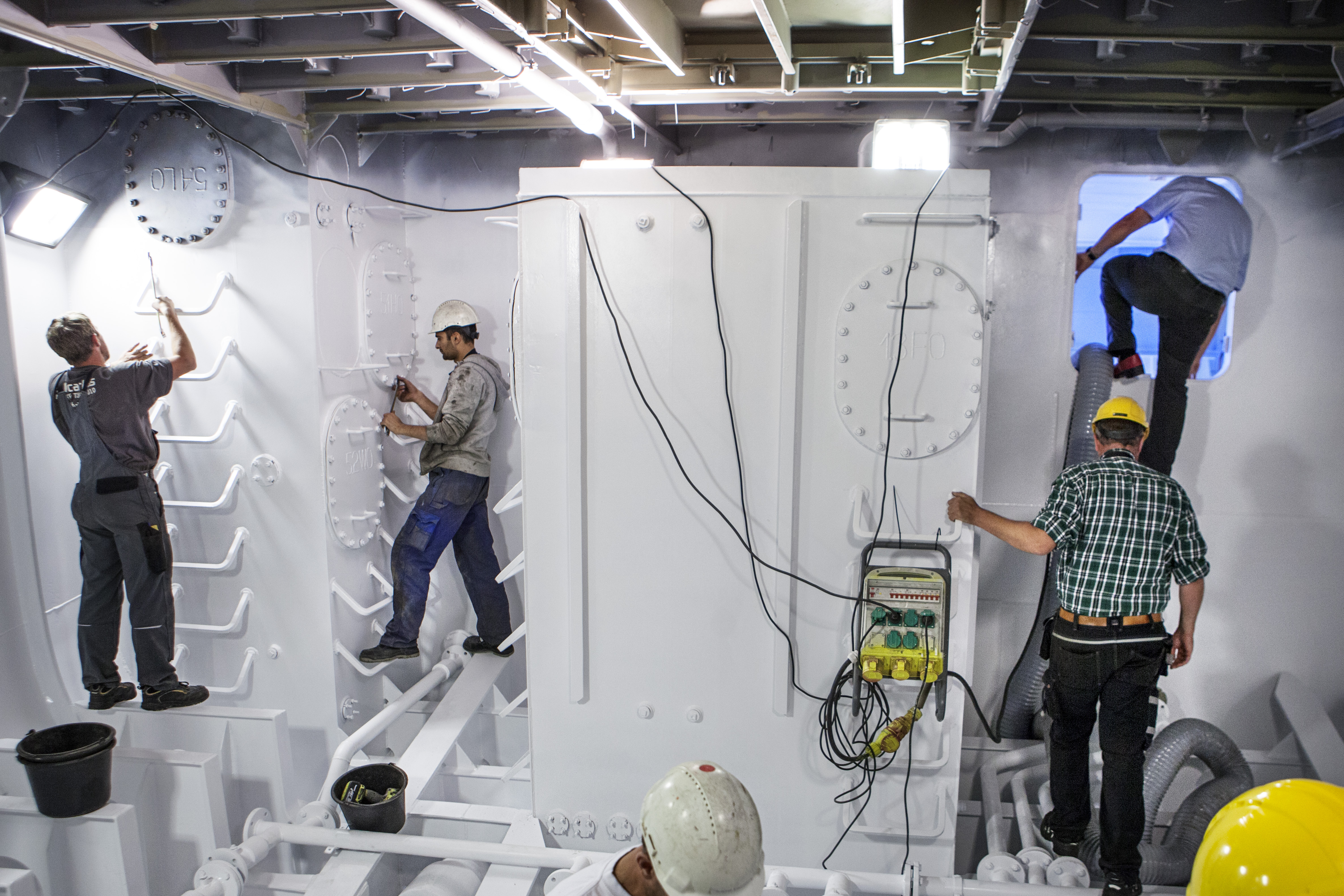She’s a beauty!
Aarhus University’s fourth research vessel, the Aurora, is to be equipped with all kinds of advanced research hardware. When she’s fully fitted out, she will have cost DKK 40 million. Omnibus joined the captain, a researcher and a precision mechanic when they went along to view her for the first time in Hvide Sande.




She’s a real beauty, lying by the quayside in Hvide Sande shipyard. But at the moment she’s still nothing more than an empty hull – although this is not obvious until you board her by descending a narrow, white steel ladder.
There are three people who are particularly keen to go on board this late summer morning to view Aarhus University’s new research vessel, which is called the Aurora after the Roman goddess of the dawn.
One of them, senior researcher Henrik Fossing from Bioscience in Silkeborg, is a member of the project group that has provided advice about the equipment and design of the research vessel. So he’s been thinking about the Aurora a lot. But he’s never actually seen her with his own eyes.
Nor has precision mechanic Jesper Voetmann from the Bioscience workshop. But he has heard a lot about her from another member of the project group: skipper Torben Vang, who saw the ship while she was still in a shipyard in Stettin, Poland.
But even though the skipper has seen the Aurora before, he’s still a little bit nervous this morning. Last week the Aurora hit the Aggersund Bridge near Løgstør while she was being towed from Stettin to Hvide Sande. Bad weather turned the journey across the Baltic and through the North Sea to Hvide Sande into a rather rough voyage.
Bigger than you expect
Jesper Voetmann’s initial reaction when standing on the quarterdeck is “She’s much bigger than I expected”. His job involves building research equipment for the Department of Bioscience and the Department of Molecular Biology and Genetics; but he also works on the university’s research vessel for two days a week on average.
Fantastic!
“She’s just fantastic!” says Henrik Fossing. He’s standing a short distance away from Voetmann inside what is going to be a wet laboratory. He’s delighted to see that the quarterdeck and wet laboratory are on the same level as each other.
“This will make it much easier for us to move samples and heavy equipment from the deck and into the lab – and what’s more we’ll be able to do it under cover.”
“Just look at this channel,” he continues, pointing at the floor of the ship. “It will prevent us from dragging a load of mud into the laboratory with us.”
Hard to imagine
The inspection continues inside the Aurora.
“I think it’s a bit difficult to imagine what she will look like. I look forward to seeing her fully equipped,” says Henrik Fossing.
They are forced to shout to each other above the noise of the shipyard workers, who are busy fitting out the white and echoing interior of the ship.
Experienced researchers
The project group consists of experienced researchers from the university. They were given DKK 40 million to design the best possible research vessel to cover all aspects of marine research.
One of the important things for the researchers was to make sure they made the most of their experience of practical marine research. And they do have plenty of experience: a total of about four or five years spent on research vessels all over the world. So the researchers, designers and shipyard all worked closely together to agree on the design of the ship, complicated technical solutions, and how to fit the vessel out with advanced research equipment.
“We’ve even discussed details like where the electrical sockets should be positioned, where the best place was to put the shelves, and what kind of desk equipment you need,” reports Henrik Fossing.
“We’ve also had to make priorities. For instance, we decided to compromise on the level of personal comfort. The ship has several two-berth cabins and one four-berth cabin instead of single cabins – we’d rather have a bigger deck area instead,” adds Torben Vang.
“But we did give high priority to noise reduction because you can’t teach the students up on deck if there’s so much noise that they need ear plugs,” he says.
A flexible research vessel
Flexibility has been a key word for the researchers from the outset, and the Aurora has been designed to ensure optimum functionality. She is the first new Danish research vessel to be built for the past 30 years.
For instance, the ship is so flexible that the crew can replace fishing tackle with seismological equipment to chart the sea bed in no more than a couple of days. And there’s plenty of room for two 20-foot laboratory containers on the quarterdeck, which has an area of 75 square metres.
Oldies but goodies
The project group have drawn on their own experience – but they have also taken a careful look at existing research vessels.
We’ve had a look at small vessels because they have some pretty neat features. And we’ve looked at older vessels because they’ve stood the test of time,” explains Torben Vang. One of the sources of inspiration for the group with regard to the quarterdeck was the old American research vessel KNORR.
The skipper, precision mechanic and researcher are all delighted when they see the large, bright, split-level bridge.
“Everyone will want to be on the bridge. The split levels ensure that the skipper has a clear view above the heads of the researchers; while the researchers will also have great working conditions and a great view of their equipment on deck,” says Torben Vang. From 1 October onwards he’ll be based at the shipyard in Hvide Sande until the Aurora heads for Aarhus in February next year.
FACTS: The Aurora
- Capacity: 14 people including the crew, on expeditions lasting up to 10 days
- Speed: approx. 9 knots (max. 11 knots)
- Length: 28 m
- Width: 8.5 m
- Draught: 2.75 m
- Area of quarterdeck: 75 m2
- Area of wet laboratory: 24 m2
- Area of dry laboratory: 16 m2
- Area of mess room/teaching space: 30 m2
- The Aurora costs DKK 40 million. DKK 30 million from the Danish Agency for Science, Technology and Innovation. DKK 10 million from Aarhus University.
News about the Aurora (in Danish)

